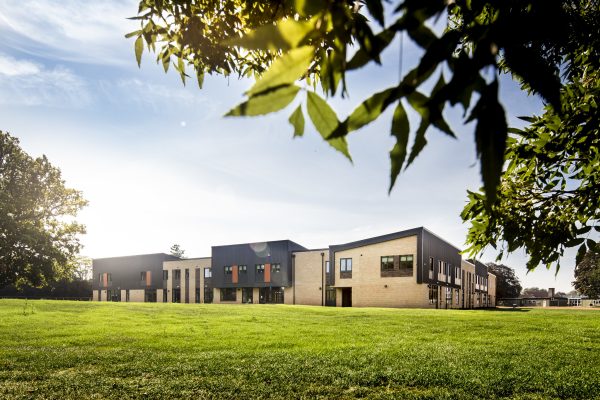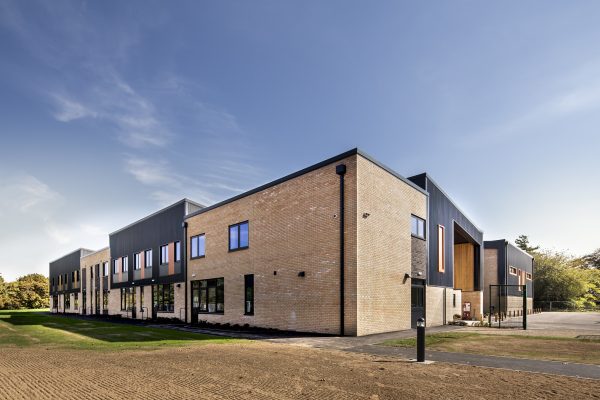
Langham Oaks School SEMH
Langham Oaks School – A Synergetic Learning Environment for SEMH Pupils
Langham Oaks School provides a nurturing and inclusive environment tailored for boys with Social, Emotional, and Mental Health (SEMH) needs. The purpose-built facility integrates education and residential boarding to support 69 pupils, allowing independence and personal growth.
Designed with an ethos of passive supervision, the building encourages interaction, participation, and connectivity with the outdoors, enabling students to thrive academically and socially.


Value
For Kier Construction Limited and Essex County Council, Bond Bryan delivered a fit-for-purpose facility designed with innovative adjacencies, enhancing both the educational and residential experiences for pupils. Passive supervision principles ensured an accessible and secure environment without physical barriers, reducing supervision costs.
The school’s open kitchen actively involves pupils in meal preparation, promoting life skills and independence. This holistic design significantly enhanced operational efficiency, connecting indoor and outdoor spaces to enable the synergetic curriculum’s full potential.


This state-of-the-art campus ensures every space is a tool for learning and growth, from the woodland bike tracks to the open kitchen. It's more than a school, it's a place where students achieve and thrive.
Impact
Langham Oaks School has profoundly impacted its community by providing an inclusive and therapeutic learning environment for SEMH pupils. The tailored spaces promote engagement and confidence, while facilities like the horticultural area and bike track support physical and mental well-being.
Beyond the school community, the return of the historic 1943 house to Essex County Council preserves local heritage, and the demolition of outdated extensions ensures responsible land use.

Sustainability
Designed with sustainability at its core, the project prioritised spatial efficiency and utilised modern construction techniques to minimise environmental impact. Optimised natural light and ventilation reduce energy demands, while the building’s adjacency to natural outdoor areas promotes ecological connectivity.
Repurposing the site responsibly supports long-term carbon footprint reduction and ensures a positive legacy for the environment.
Details
Information
Scope Architectural Design Status Completed Completion Date 2020 Location Essex Value £8.5 millionCollaborators & Partners
Landscape Architect Weston Williamson + Partners Principal Contractor Seddon Structural Engineer Capita Symonds MEP Engineer Buro Happold Planning Consultant Savills Fire Engineer Cyrus Consulting Engineers Environmental Consultant AECOM Acoustic Consultant Hodkinson Consultancy